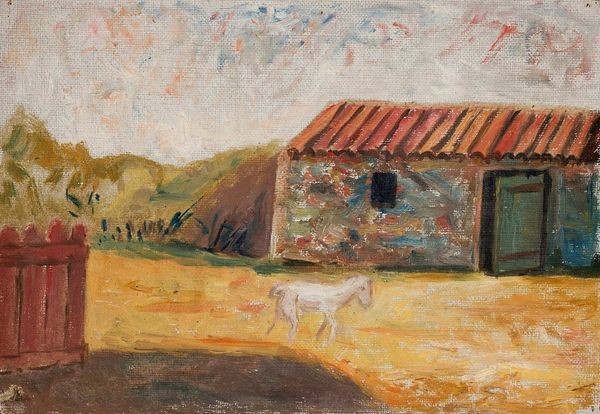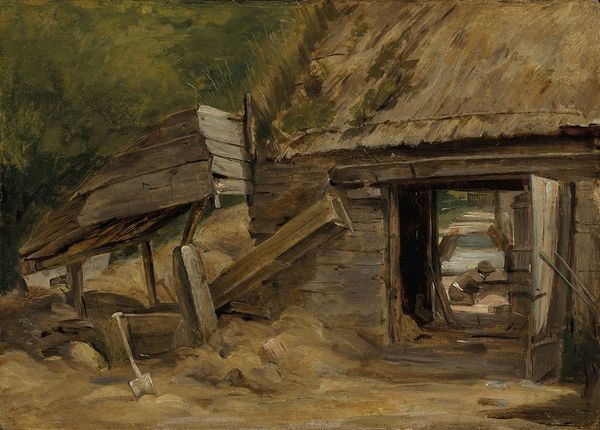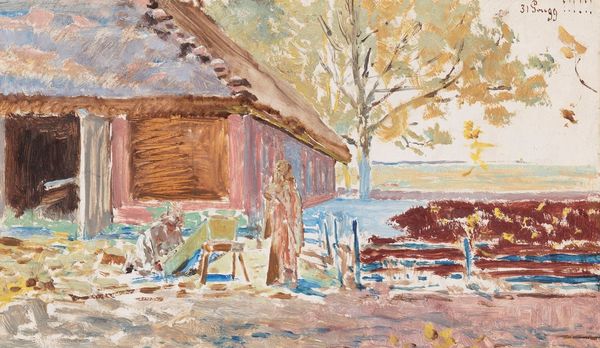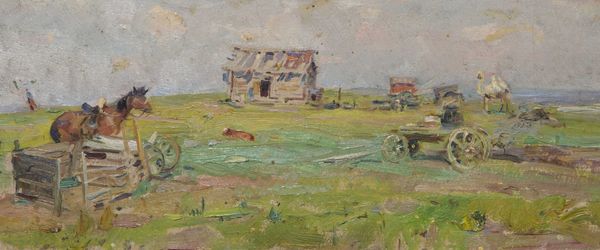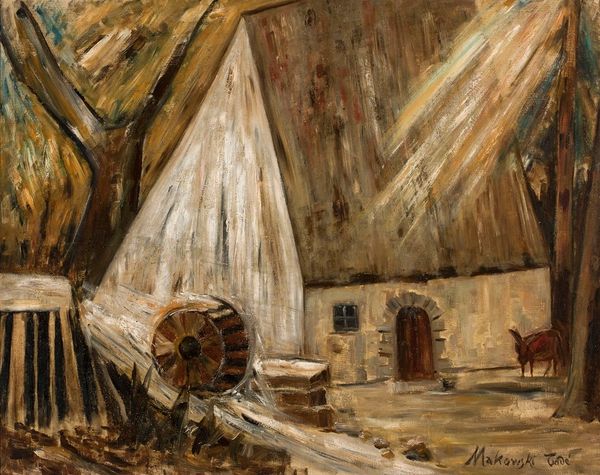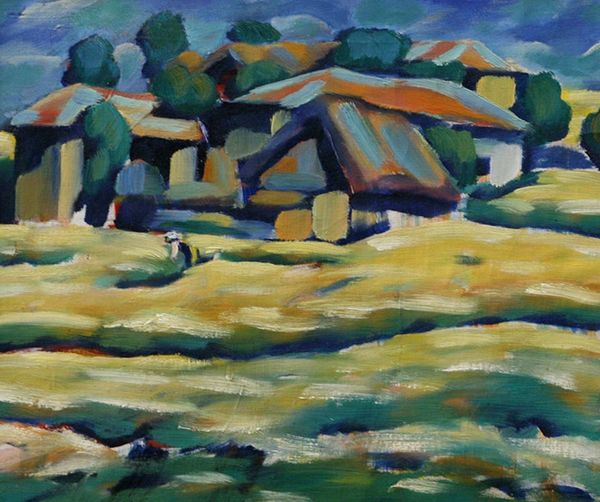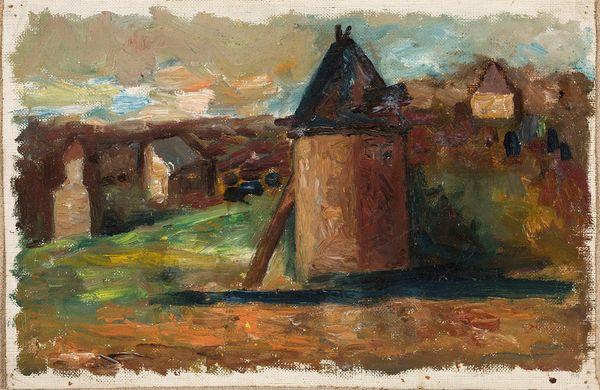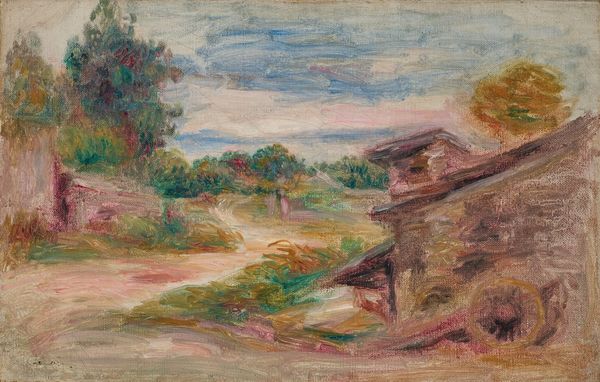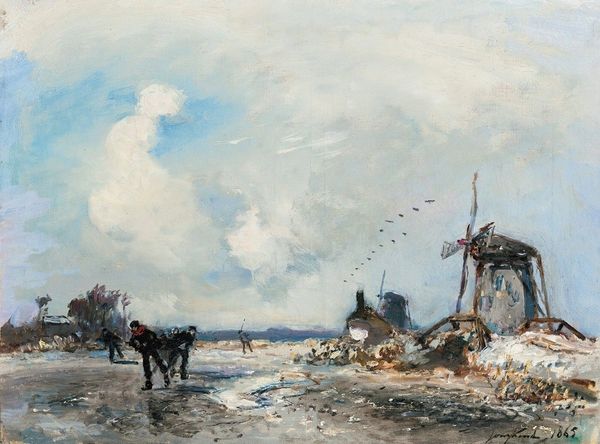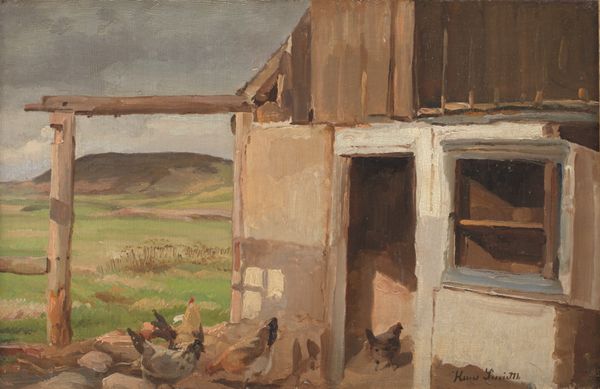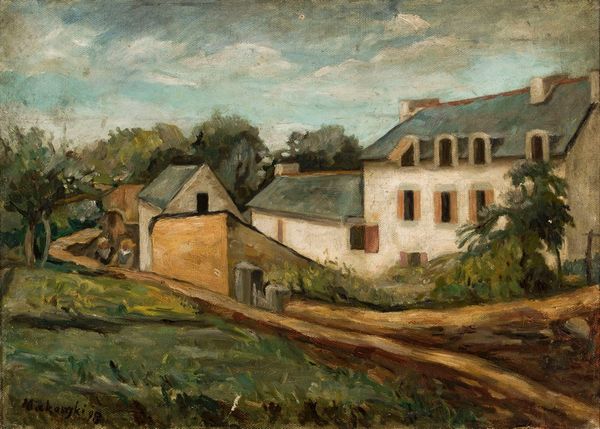
Copyright: Nicolae Darascu,Fair Use
Curator: Welcome. We’re now viewing Nicolae Dărăscu’s painting, “Câmpia Șopronului,” dating to 1930. It's an oil painting, depicting a rural scene. Editor: It's immediately striking—the subdued palette, a kind of hazy light. It evokes a stillness, a moment captured outside of time, but connected intimately with physical experience. There is a sort of solemn atmosphere that transcends the depicted image. Curator: Dărăscu was a master of impressionistic landscape. It's worthwhile noticing the visible brushstrokes. These short touches of color give the scene a sense of immediacy. Think of how he is manipulating paint to portray that distinct atmosphere of the Sopronului plains. Editor: Exactly! And within that, observe the horse—a crucial symbol here. It's not just an animal; it's a symbol of labor, a representation of the agricultural life so vital to the region's cultural identity and collective memory. The horse’s position, patiently waiting, almost mirrors the timeless quality of the landscape. It's tied materially to the agricultural output, and symbolic for endurance in the community. Curator: A key aspect, I think, is the composition itself. Notice the thatched roof dominating the structure. Dărăscu guides our eye through material elements—the wood, the straw. Editor: The architecture further cements a relationship to a pre-industrial past—or, at least, to a rural existence apart from contemporary urbanization. The open door acts almost as a visual invitation to examine simpler social structures of existence, connected with nature and labor. The structure suggests the simplicity of that older world, offering peace and tranquility. Curator: It presents a particular way of life; what one *does* with those materials becomes just as important as the inherent properties. His choices, these techniques, create a lens through which to appreciate those agricultural lifestyles in relation to the canvas and pigments. Editor: Ultimately, it encourages us to consider our place in relation to the cultural memories held by the land, these structures, this animal. Curator: Precisely. Dărăscu delivers us not just an image of place, but reminds us of labor’s interaction with environment and economy through its products, a very tangible experience of Sopronului. Editor: And that’s what makes it linger long after you’ve moved on. A strong visual connection with the history that persists beyond it, even in the present.
Comments
No comments
Be the first to comment and join the conversation on the ultimate creative platform.
